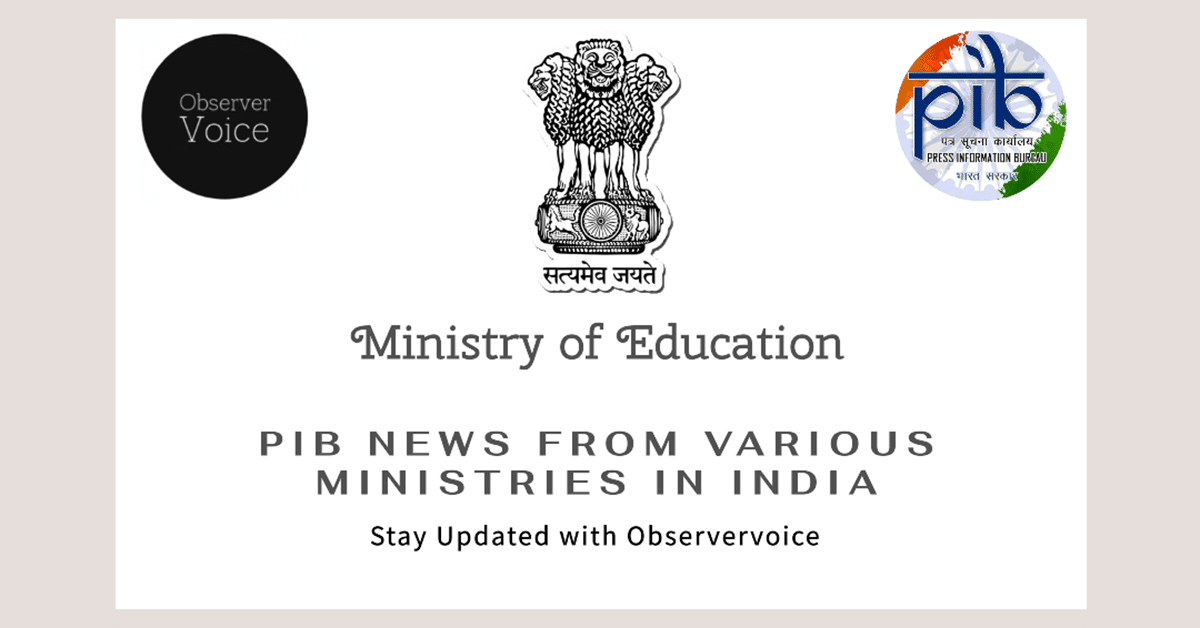Transforming India’s Education Landscape

India’s education system has undergone significant changes over the past decade. Under the current government’s leadership, the focus has shifted towards enhancing school infrastructure, promoting digital inclusion, and empowering women. These initiatives aim to ensure quality education for every child in the country. Shri Dharmendra Pradhan, the Union Minister for Education, emphasized this transformation during a recent press conference in New Delhi. He stated that schools are now not just centers of learning but also platforms for opportunity and empowerment.
This article explores the key developments in India’s school education system, highlighting improvements in infrastructure, investment, linguistic diversity, and student performance.
Growth of School Infrastructure
The government has made substantial strides in improving school infrastructure from 2013 to 2024. One of the most notable achievements is the increase in electricity availability in schools, which has risen from 53% to an impressive 91.8%. This enhancement is crucial for creating a conducive learning environment. Access to computers has also improved significantly, with the percentage of schools equipped with computers rising from 24.1% to 57.2%. Internet facilities have seen a remarkable increase as well, going from 7.3% to 53.9%.
In addition to digital advancements, the availability of basic amenities has also improved. Access to drinking water in schools has surged from 83.2% to 98.3%, while handwashing facilities have jumped from 43.1% to 94.7%. Furthermore, the percentage of schools with playgrounds has increased from 66.9% to 82.4%, promoting physical activity among students. Library facilities have expanded from 76.4% to 89%, providing students with essential resources for learning.
Moreover, the government has prioritized inclusivity by increasing the availability of ramps and handrails for differently-abled students. Ramps have grown from 56.8% to 77.1%, and handrails from 33.9% to 52.3%. Rainwater harvesting facilities have also seen a significant boost, increasing from 4.2% to 28.4%. These improvements reflect a comprehensive approach to enhancing the educational infrastructure across the country.
Increased Investment in Education
Investment in education has seen a remarkable increase over the past decade. The per-child expenditure by the government has grown by over 130%, rising from ₹10,780 in 2013-14 to ₹25,043 in 2021-22. This substantial increase demonstrates the government’s commitment to providing quality education and resources for students.
The rise in investment has allowed for better facilities, improved teaching resources, and enhanced learning experiences. Schools can now afford to hire qualified teachers, invest in modern teaching aids, and create a more engaging curriculum. This financial commitment is crucial for addressing the diverse needs of students and ensuring that they receive a well-rounded education.
Furthermore, the increased funding has enabled the government to implement various programs aimed at improving educational outcomes. These initiatives focus on skill development, vocational training, and digital literacy, preparing students for the challenges of the modern workforce. The emphasis on quality education is expected to yield long-term benefits for the country’s economy and society as a whole.
Focus on Bharatiya Bhasha
The government has made significant strides in promoting linguistic diversity within the education system. Recognizing the importance of regional languages, textbooks for Classes 1 and 2 are now available in 23 Indian languages. This initiative ensures that young learners can access education in their mother tongues, fostering a deeper understanding of the content.
Additionally, the DIKSHA platform has been enhanced to include multilingual e-content in 126 Indian languages and seven foreign languages. This digital resource provides students with a wealth of information and learning materials, catering to diverse linguistic backgrounds. The release of 104 primers in various Indian languages further supports early literacy and language development.
To promote lifelong learning, the government has launched dedicated educational channels. Notable initiatives include a Tamil language channel set to launch on July 29, 2024, and the ULLAS channel for adult education on September 8, 2024. Furthermore, a channel for hearing-impaired learners in Indian Sign Language (ISL) is scheduled to launch on December 6, 2024, under the PM e-Vidya initiative. These efforts reflect a commitment to inclusivity and accessibility in education, ensuring that all learners have the opportunity to succeed.
Improvement in Student Performance
The performance of students in board exams has seen a significant rise, indicating the positive impact of the government’s initiatives. In Class X, there has been a remarkable 64% increase in the number of students scoring higher grades. Similarly, Class XII students have experienced a 66% increase in improved performance. These statistics highlight the effectiveness of the educational reforms implemented over the past decade.
The rise in student performance can be attributed to several factors, including improved infrastructure, increased investment in education, and a focus on quality teaching. Schools are now better equipped to provide a conducive learning environment, and teachers have access to enhanced resources and training. This holistic approach has resulted in better academic outcomes for students across the country.
Moreover, the emphasis on skill development and vocational training has prepared students for real-world challenges. By integrating practical skills into the curriculum, students are better equipped to pursue higher education or enter the workforce. The government’s commitment to improving educational outcomes is evident in the rising performance levels of students, paving the way for a brighter future for the nation.
Observer Voice is the one stop site for National, International news, Sports, Editor’s Choice, Art/culture contents, Quotes and much more. We also cover historical contents. Historical contents includes World History, Indian History, and what happened today. The website also covers Entertainment across the India and World.

